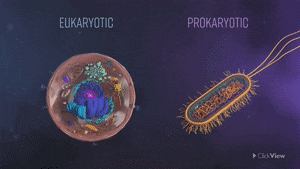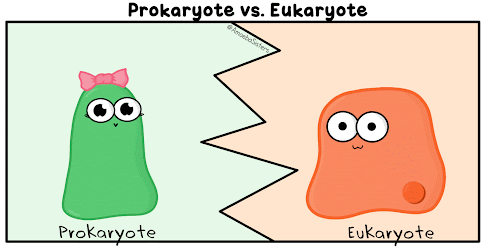What are living organisms?
Living organisms are made up of cells. Living organisms carry out the vital functions: nutrition,interaction and reproduction. This is what differentiates living organisms from non-living things.
 |
| Nutrition |
 |
| Interaction |
What are cells?
Cells are the smallest living parts
of living organisms. They carry
out the vital functions of nutrition,
interaction and reproduction as
well.
All cells have three parts: a cell
membrane, cytoplasm and genetic
material.
Genetic material controls the
function of the cell.
Cytoplasm is a gel inside the cell.
The cell membrane is a thin,
flexible cover surrounding the
cell. It regulates the exchanges of
substances between the cell and
the exterior.
 |
| Cell membrane |
 |
| Cytoplasm |
What are the different
types of cells?
Different types of living organisms
have different types of cells.
There are two main types of cells.
• Prokaryotic cells have the
genetic material within a
certain area of the cytoplasm.
They don’t have a nucleus.
Prokaryotic cells have a rigid
cell wall surrounding the cell
membrane. They often have
flagella to help them move.
• Eukaryotic cells have the
genetic material inside a
nucleus. They have many
different types of organelles.
Organelles perform different
functions, like the organs in the
body. Some of these cells have
a rigid cell wall surrounding
the cell membrane and others
don’t.
OUTLINE (STUDY)
THE CELL (ENGLISH)
LA CÉLULA (ESPAÑOL)
LA CÉLULA: ESTRUCTURA Y FUNCIONES
THE CELL: STRUCTURE, FUNCTIONS
LAS CÉLULAS EUCARIOTAS
LAS CÉLULAS PROCARIOTAS
THE HUMAN CELL
THE CELL STRUCTURE
INSIDE THE LIVING CELL
TIME TO PLAY
características esenciales:
• Todos los seres vivos están formados por células.
• Los seres vivos realizan las funciones vitales de nutri-
ción, relación y reproducción
características esenciales:
• Todos los seres vivos están formados por células.
• Los seres vivos realizan las funciones vitales de nutri-
ción, relación y reproducción.













No hay comentarios:
Publicar un comentario
Nota: solo los miembros de este blog pueden publicar comentarios.